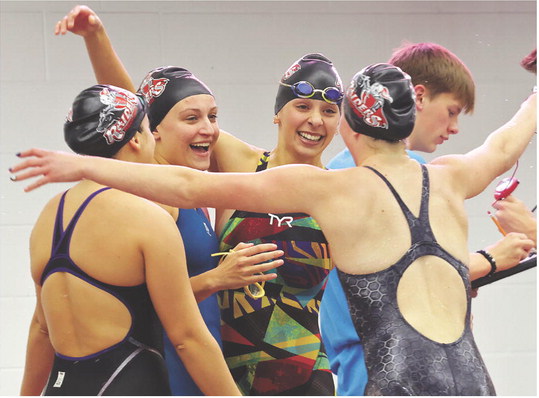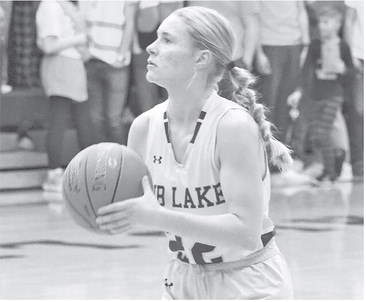An Outdoorsman‛s Journal:


An Arizona summer Hello all, Thursday, May 18, I had my last final of my senior year at UW-Stevens Point, headed home to say goodbye to my family, and by the morning of the 19th I was headed down to Whiteriver, Ariz. I had no clue what to expect out of my new job or the area I would be living in for the next three months. The only thing I did know was that I would be trading the comfort of my bedroom and mattress for a tent and a few sleeping pads until I returned back to Wisconsin.
Whiteriver is on the Fort Apache Reservation in eastern Arizona, which borders the White Mountains. I spent my summer living at the end of a six-mile hilly and curvy dead-end road that went down into a beautiful canyon and led to our office building and Alchesay National Fish Hatchery. We were gifted with free rent, a semi-flat yard to put our tents and an old house that we could use all the facilities of but not sleep in.
Sleeping in a tent for three months made for quite the experience, as you could imagine, but I was happy to find out that I didn’t really seem to mind it at all. I did start to get a little spooked, though, when one morning one of my tent neighbors woke up to a small black bear trying to get into his tent less than 100 yards from me.
The Apache trout crew was made up of nine U.S. Fish and Wildlife Service employees and eight Arizona Conservation Corps members. The Fish and Wildlife employees were similar to me in that they had a background in natural resources and moved to Whiteriver for the job; I also lived with these people. The Arizona Conservation Corps members were locals to the area and most were members of the White Mountain Apache tribe.
To kick off the season we visited two streams to collect environmental DNA (e.DNA) samples. e.DNA is a new development in biology where you can determine what species of fish are present in a stream by analyzing the DNA in the water in a lab. This helped give us an idea of where Apache, brook and brown trout were or weren’t located, which helped our bosses decide what areas to send the crew so our work would have the most impact.
Once we finished up e.DNA testing, we spent most of our summer performing non-native removals in our target streams. To perform non-native removals, we would block off a 100-meter section of stream using two nets, and then walk through the stream with one person electrofishing, one to two netters, and one person walking behind with a bucket. To catch fish, we would use a backpack electrofisher, which sends an electrical current through the water that the fish are attracted to and will swim towards, and then get shocked, making them easier to net. This process is safe for the fish and they recover quickly after. Many fish can even resist the shock enough to swim away, and they are harder to net than you would think. The person with the bucket walked behind to hold on to any Apache trout and keep them alive until we finished the pass so they could be measured. This process was repeated two more times and we would move upstream to our next site. These surveys provided our biologists with a good idea of the number of fish, and species and size makeup of the fish in that section of stream. These surveys meant we were out hiking and in the streams handling fish almost all day every day, which is exactly why I took this job. I could write a whole story just about the hikes we had to our sites. Our sites ranged from 7,000 to 10,500 feet in elevation and all of the land we worked on was Apache trout recovery habitat, meaning no one could be out there except us. This made every day a true wilderness experience. We’d hike anywhere from 0.5 to 2.5 miles, with steep elevation changes, no trail, tons of downed trees and 15-40 pounds of gear on our backs, just to get to and from work sites. This job was a physical test every day, and I was very happy that my knee withstood the entirety of the summer.
Perhaps my favorite part of living in Arizona was being surrounded by Apache culture. Apache tribes were the last to secede to the U.S., and their culture is still very strong among them. I was fortunate enough to be invited to a Sunrise Dance, a four-day gathering to recognize and celebrate a girl’s transition into becoming a woman. Apache people have had Sunrise Dances for hundreds of years all over those lands and it was very moving to be able to witness people who were so engrained in their culture and cared so much for one another.
It’d be impossible to condense the whole summer into this column, but hopefully this gave you a little insight to what my experience in Arizona was like!
Selina Walters
Mark Walters




